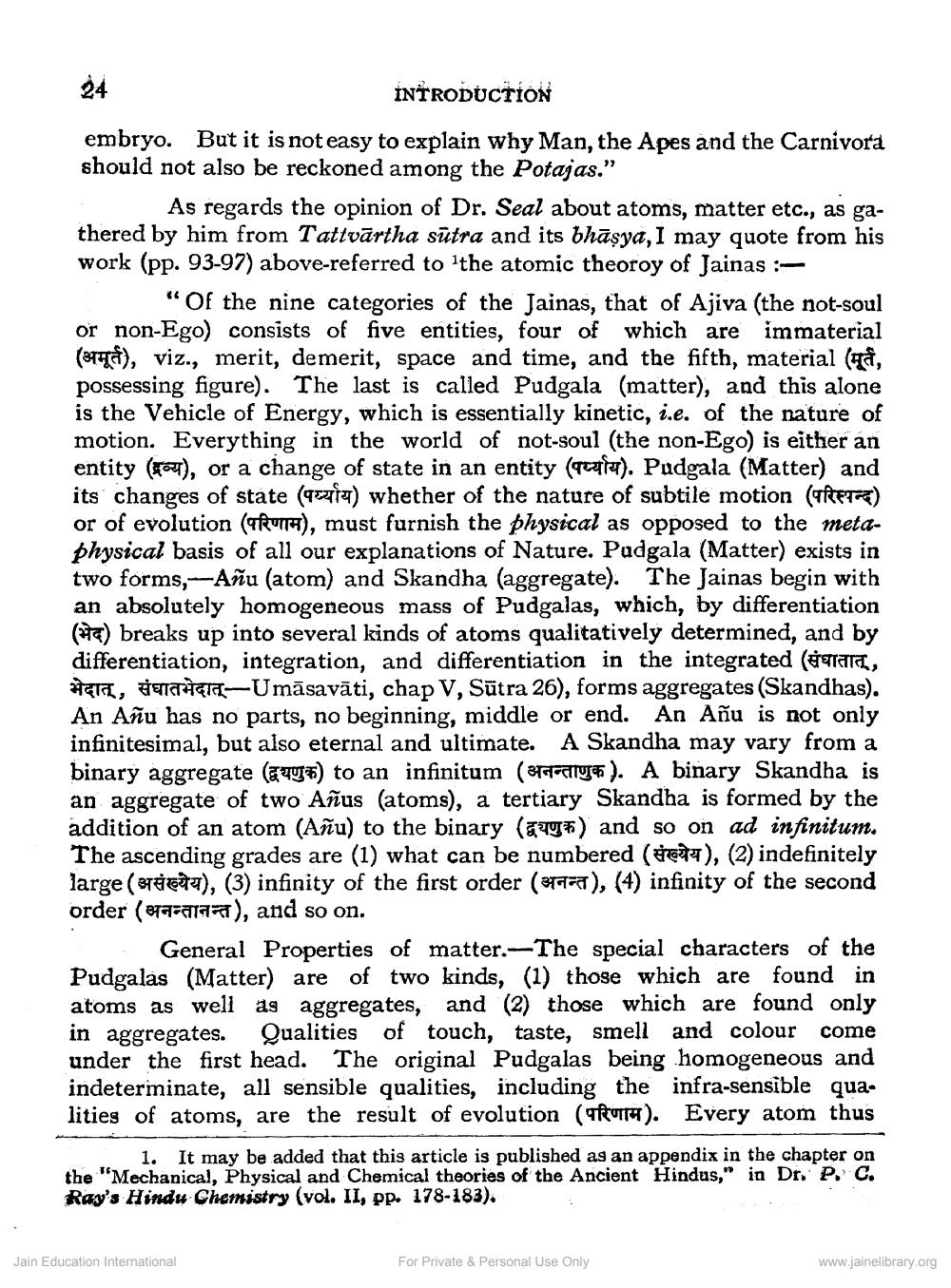________________
INTRODUCTION embryo. But it is not easy to explain why Man, the Apes and the Carnivora should not also be reckoned among the Potajas."
As regards the opinion of Dr. Seal about atoms, matter etc., as gathered by him from Tattvārtha sutra and its bhāsva. I may quo work (pp. 93-97) above-referred to the atomic theoroy of Jainas :--
“Of the nine categories of the Jainas, that of Ajiva (the not-soul or non-Ego) consists of five entities, four of which are immaterial (stad), viz., merit, demerit, space and time, and the fifth, material (a, possessing figure). The last is called Pudgala (matter), and this alone is the Vehicle of Energy, which is essentially kinetic, i.e. of the nature of motion. Everything in the world of not-soul (the non-Ego) is either an entity (ru), or a change of state in an entity (regia). Pudgala (Matter) and its changes of state (92447) whether of the nature of subtile motion (IFTR) or of evolution (pon), must furnish the physical as opposed to the metaphysical basis of all our explanations of Nature. Padgala (Matter) exists in two forms,--Añu (atom) and Skandha (aggregate). The Jainas begin with an absolutely homogeneous mass of Pudgalas, which, by differentiation () breaks up into several kinds of atoms qualitatively determined, and by differentiation, integration, and differentiation in the integrated (TTTTT, HET, HEHET-Umāsavāti, chap V, Sūtra 26), forms aggregates (Skandhas). An Añu has no parts, no beginning, middle or end. An Añu is not only infinitesimal, but also eternal and ultimate. A Skandha may vary from a binary aggregate ( 6) to an infinitum (STF ). A binary Skandha is an aggregate of two Añus (atoms), a tertiary Skandha is formed by the addition of an atom (Añu) to the binary (aws) and so on ad infinitum. The ascending grades are (1) what can be numbered (6), (2) indefinitely large (BTHETH), (3) infinity of the first order (1977), (4) infinity of the second order (79501977), and so on.
General Properties of matter. The special characters of the Pudgalas (Matter) are of two kinds, (1) those which are found in atoms as well as aggregates, and (2) those which are found only in aggregates. Qualities of touch, taste, smell and colour come under the first head. The original Pudgalas being homogeneous and indeterminate, all sensible qualities, including the infra-sensible qualities of atoms, are the result of evolution (RUTH). Every atom thus
1. It may be added that this article is published as an appendix in the chapter on the "Mechanical, Physical and Chemical theories of the Ancient Hindus," in Dr. P. C. Ray's Hindu Chemistry (vol. II, pp. 178-183).
Jain Education International
For Private & Personal Use Only
www.jainelibrary.org




